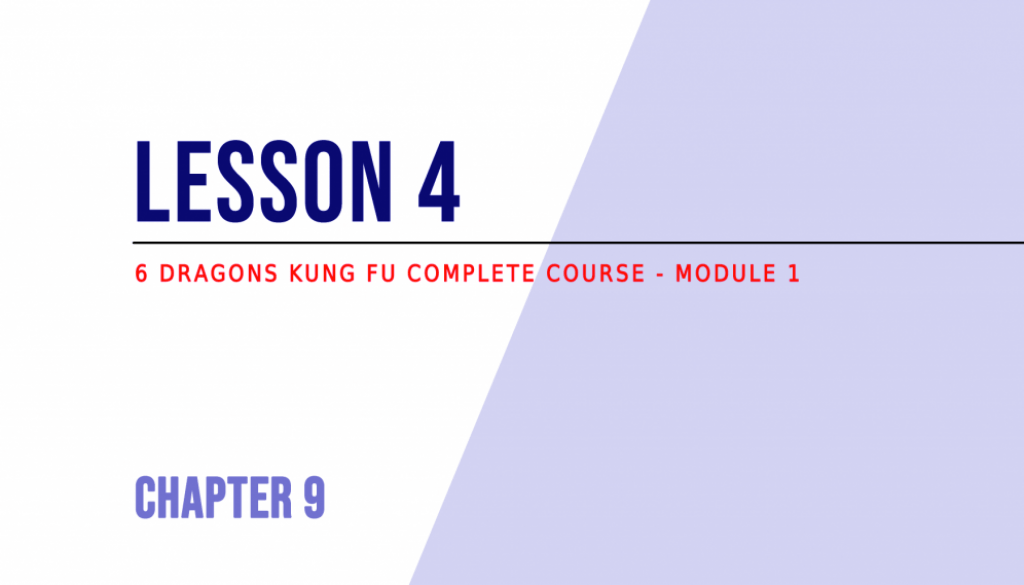Lesson 4 – The basics of footwork
The core concepts of combat mobility
After having understood the importance of balance, you have to start to learn how to connect it to the spatial movement in the combat scenario.
Before passing to the specific types of footwork of our style, let’s start from a few simple but fundamental concepts.
Effectiveness
- Balance – Each step must be balanced (head, trunk, limbs, etc.); while you move, you must always be ready at the same time to attack and defend (eg. the guard must remain up and stable)
- No loading – As for the combat techniques, you should try to avoid loading motions (walking, running, changing direction, jumping, etc.)
- Never be out of measure – Each time you assign energy to a movement you have to calibrate it in order to maintain aligned your line of gravity (as if it were just in front of us, read How to improve balance: tricks and exercises)
- Be reversible – You should always try to maintain each movement you do immediately reversible
- The head motion – In one-on-one battles (eg. in sports competitions, read The 6 types of martial clash), the head can move freely following the bumps of the body, in open fields no (if the head does not remain as stable as possible the sight can grasp fewer details from the scenario, read Identify the dangers as animals do)
- From guard stance to guard stance – In general, whatever technique you want to use to move, you must always try to start from a correct guard position and arrive at a correct, balanced guard position (it may seem obvious but it is not, especially for beginners)
- …
Speed, reach and economy of effort
- Bouncing on the bones – The movements (partially) done bouncing on the bones are less tiring (once conditioned to them), faster but shorter (in terms of reach) than the ones done with the muscles only
- Using the muscles – The movements done bouncing with the simple implementation of the muscles are more tiring, slower but have a longer reach
- The muscle chain – Each movement must involve the entire body mechanics, everything that is not helping us is working against us (read Use the body power: the muscle chain)
- Jump only when it is necessary – Jumping costs a lot of energies and make you vulnerable when you lose contact with the ground (when you fly you cannot move and you lose your rooting, read Lesson 9.3)
- Remain attached to the ground – It is better to slide and detach the feet from the ground only the bare minimum that the ground imposes for rapid and precise actions
- The knees of the tiger – The knees must always be bent and never rigid (this make us more reactive and safer, read also Lesson 5.2)
- The moment of stability and that of mobility – Opened legs and lower stance mean better balance but slower movements and vice-versa
- Use the force of gravity – The force of gravity is your friend, the movements that (through relaxation) go downward, can be fast and without effort
- …
A note by Master Kongling – During combat, the rational mind must not be focused on what type of footwork to choose, this must happen instinctively; to gain this attitude you have to train each method in a specific / separated practice and then test if, in the fundamental exercises (read The basics of 6 Dragons Kung Fu), they come naturally. Never force the use of a specific type of movement in a dynamic exercise. Not all are the same and not all types are suitable for all people.
In the next lesson, we will talk about 6 Dragons Kung Fu’s basic footwork methods.
In-depth video courses
- Basic 6 Dragons Kung Fu Exercises – The core practices fundamental to develop dynamic balance while moving
- Basic free hand fighting techniques – How to move and how to fight
In-depth articles
- Mobility, balance and direction change – What are the elements involved in our mobility
- Mobility and balance through the upper limbs – How the arms can help the flow of the movement
Questions
Reply in the comments and share your experience:
- In combat, can you move quickly without losing your balance?
<< Lesson 9.3 – Index – Lesson 9.5 >>
Author: Master Kongling
Founder of 6 Dragons Kung Fu.How to master 6 Dragons Kung Fu?
Are you searching for:
- Daily training exercises?
- Synthetic theory and concepts?
- A step by step path from white to black belt?
- A path (clear, consequential and gradual) designed to build real martial skills?
- A direct contact with Master Kongling?
Go to our Patreon page and choose a training plan: starting from the Practitioner level, you will gain access to all this and much more.
Inside each Premium Lesson, you will receive the same teaching (practices, tips, concepts, small secrets and corrections) reserved to the live students of Master Kongling.
Important - Once a certain number of registrations are reached, no other participants can be accepted. For more information write to: [email protected].










May 10, 2020 @ 4:08 am
I filmed myself and I have seen how clumsy I am in changing the directions, what can I do?
May 11, 2020 @ 11:08 pm
Train at slow motion